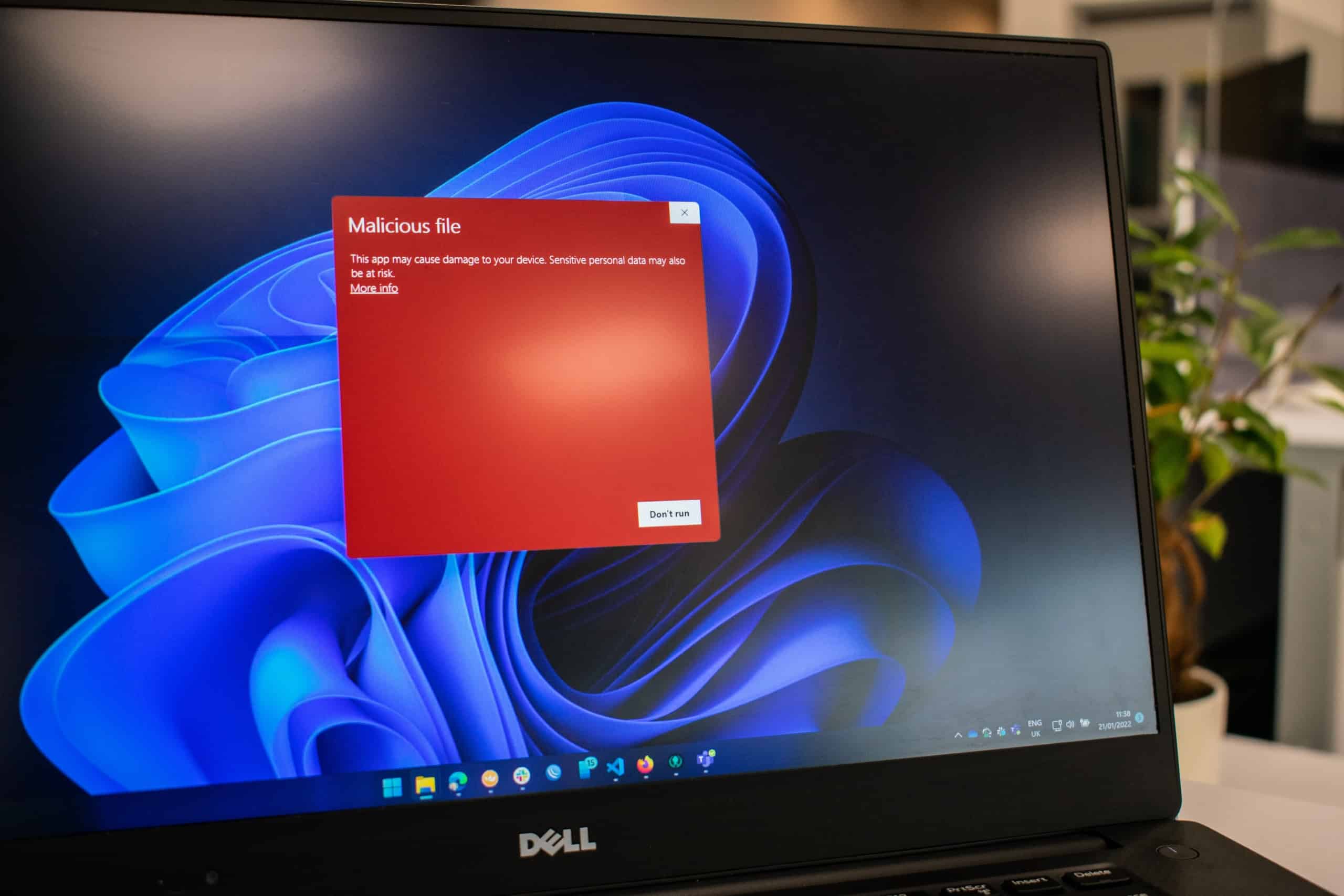There are 1.13 billion websites in the world, and 30,000 of them are hacked every day.
According to Techjury, every website is vulnerable to cyber attacks, as with everything connected to the internet. In 2022, cybercrime cost companies around the world $6 trillion, and the amount is expected to balloon to $10.5 trillion by 2025.
In this article, we will talk about common website vulnerabilities and what you can do to protect yours.

What Are Website Vulnerabilities?
Every business must protect its website. It is the face of your brand online, and if you have an ecommerce store, it is a critical element of your business operations. It may cripple the company if your website falls victim to a cyber attack.
Additionally, customers’ personal information may be compromised in such an attack. If your business is why their private data is stolen, this could cause irreparable injury to your brand reputation.
To prevent cyber attacks is to understand website vulnerability, which is a weakness or misconfiguration in a website or web application. This weakness will allow a cybercriminal to gain control over the website and compromise its data.
Here are the most common types of website vulnerabilities that cybercriminals will take advantage of:
1. SQL Injections
Standard Query Language (SQL) injection is one of the most common hacking techniques where cyber attackers inject malicious code into a website’s database. Hackers do this to create malicious posts, access customer information, or gain complete control over the website. Bad actors may also oversee the website’s content management system (CMS).
2. XSS
Cross-site scripting (XSS) is the process of sending malicious scripts that will automatically execute on the user’s browser. XSS is a type of malware that could compromise data, install viruses, or redirect users to a malicious site.
3. Broken Authentication
Broken authentication refers to illegitimate login-based access that hackers use to gain control over a website. Hackers could use session management or credential management to gain access.
4. Command Injections
This involves injecting code into the website’s server. It occurs when user input is not validated properly. As a result, hackers could hijack the website, the entire host server, or start a botnet attack using the compromised server.
5. IDOR
Insecure Direct Object Reference (IDOR) attack is a classic case of manipulation using common website references. It occurs when an internal object, like a file or database key, which is referred to as the direct object reference, is exposed to the user. When the hacker provides the reference, they can access the system and gain control over the website.
6. LFI/RFI
A local file inclusion (LFI) attack is when a hacker uses a file stored in the target server to execute a malicious code. It becomes a potential remote file inclusion (RFL) attack when the file used is from an external source.
The attacks include delivering malicious payloads to launch phishing pages on the users’ browsers, putting dangerous shell files on public sites, and taking control over the website’s control panel or host server. LFI and RFI attacks are also often used to initiate distributed denial of service (DDoS) and XSS attacks.
7. Sensitive Data Exposure
Data must always be encrypted, whether it is in transit or at rest. This includes credit card information and user passwords, which must always be hashed. Moreover, cookies with sensitive information must have the Secure flag.
8. Cross-Site Request Forgery
It’s not as common as the other things on the list, but it’s no less damaging. In cross-site request forgery, hackers trick website administrators or site users into performing malicious activities. The unknowing admin or user inadvertently allows attackers to change product prices or transfer funds from one account to another. They could also hijack accounts and perform nefarious actions with the compromised information.
These are just eight of the most common website vulnerabilities. Hackers regularly find new ways to launch attacks against websites—to earn money, make a statement, or simply because they can.

8 Simple Ways to Protect Your Website from Cyber Attacks
A reliable antivirus software like McAfee or Norton and VPN will do wonders to protect your privacy and avoid possible malware attacks. You should also consider enlisting the expertise of a reputable cybersecurity company like Microminder CS. But for website vulnerabilities you need to the following are needed:
1. Use Passphrases
Hackers could trick you into providing hints that would result in them guessing your passwords. But when you use a passphrase—which consists of over 100 characters—you ensure your online safety.
A passphrase is also recommended as an encryption key, as it is very difficult to crack. Make sure the passphrase is not tied to anything personal that a hacker may figure out.
2. Activate Web Application Firewall
Website application is the gateway to valuable data; hence, it is a common target among bad actors. When you activate a firewall, you provide a layer of protection against common attacks like XSS, SQL injection, or session hijacking.
A firewall protects your site and your data by monitoring, filtering, and blocking any malicious HTTP traffic penetrating the website application. Leveraging Python and SQL expertise can enhance your firewall’s capabilities by enabling advanced threat detection, custom rule creation, and in-depth data analysis for improved security posture.
3. Update Software and Plugins
Building and maintaining a website means you need software and plugins to ensure they stay operational and efficient. And these need to be updated regularly because if not, you will leave your website vulnerable to attacks.
Cybercriminals spend a lot of time on the internet trying to find new ways to damage businesses and their online assets. They will eventually find a way to hack a website with outdated software and plugins. Update these components as soon as they are available, and upgrade them when necessary.
3. Encrypt Data
No matter how complex and sophisticated your website protection is, you still need to do the simplest type of preservation, which is data encryption. It also helps to have backups of crucial data—store them elsewhere.
Data encryption entails adding Hypertext Transfer Protocol Secure (HTTPS) and (Secure Sockets Layer) SSL certificates. The former provides security online while preventing possible interruption while content is in transit. SSL is an added layer of security that encrypts personal information that a user inputs into the system while the data travels from the website to the database.
4. Use a Secure Web Host
Make sure you choose a reliable and secure web host. It must provide the stability that ensures servers are running 24/7 while establishing that your data and those of your web visitors are protected every second on the site.
What does web hosting security look like?
- It restricts access to secure information.
- It provides data backups.
- If a website is hacked, it should provide an easy and manageable way to rebuild.
- It must detect and remove malware.
- It should prevent DDoS attacks.
- It must support a content distribution network (CDN).
- It must provide hardware protection.
- It monitors and analyzes network threats and resolves them immediately.
5. Backup Your Website
You must have a backup of your website—more than one, if possible. A backup is vital when recovering information in case of a website breach or security failure.
It also helps to have an offsite backup as the internet is the main gateway to hacking and cybercrimes. Offsite data is also protected from hardware failures.
6. Limit the Number of People Who Have Access to Web Operations
Too many people handling a website will increase its vulnerability to threats. And even when you trust all the people in your organization, allowing too much access gives cybercriminals multiple entry points to attack your website. Every login credential could be used as a portal to hack sensitive data.
Many employees do not think about website vulnerabilities. They are only concerned about their tasks, which in itself is a vulnerability.
7. Tighten Network Security
You must educate every person with website admin access about the dangers of security breaches. It is best to institutionalize effective security measures, such as regular expiration of security logins and regular password or passphrase changes.
Security software must be updated regularly, too.
8. Continually Learn About Threats and Web Protection
When you understand the threats your website faces, you can learn how to contain them. But with the fast-paced nature of technology, threats to online security are always changing and evolving.
Fortunately, prevention and protection measures are constantly developing as well. Cybersecurity insurance rates are increasing. This is why it is important to keep educating yourself and your team about website admin and cybersecurity. Updated information will help ensure your enterprise’s safety on multiple levels.
Every team member must use VPN for every activity, even when they are not directly working on the website. It is just basic practice for privacy and security on a personal and business level.
Additionally follow these top 10 cybersecurity best practices to protect your website from vulnerabilities and attacks. Protection ranges from simple to complex.

Conclusion
Cybercrimes are quite alarming because hackers are very relentless in coming up with new ways to take advantage of online vulnerabilities.
The best thing you can do is to stay ahead of cybercriminals by upgrading your website protection and always being on top of cybersecurity trends. Don’t just depend on one type of security tool for your website—use as many as you can to cover all of your bases.
Don’t scrimp on your cyber protection budget because it is more important than ever in the digital age.